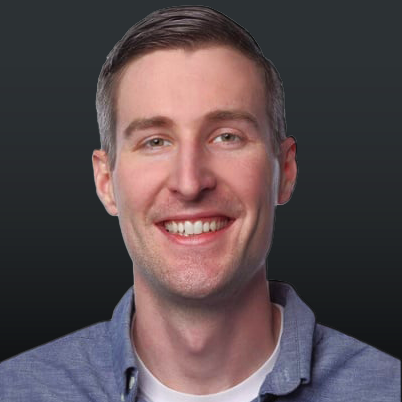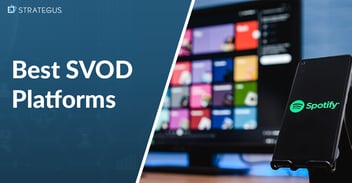- Home
- Strategus Blog
- Path to Conversion: Understanding the Consumer Journey AND How Advertising Impacts Intent
Path to Conversion: Understanding the Consumer Journey AND How Advertising Impacts Intent
 Andy Dixon
Andy Dixon
5 minutes read

As the digital marketplace becomes increasingly complex and interconnected, the consumer decision-making journey evolves. What was once a relatively linear pathway from brand awareness to purchase is now an intertwined web of potential contact points. This is because most consumers will directly interact with your brand on various platforms over days, weeks, or even months.
While these additional opportunities can be beneficial, it is vital that you understand the modern consumer journey and how your advertising impacts their purchasing intent. Otherwise, the results of your marketing efforts will be lackluster at best.
Below, we review the traditional consumer journey, highlight how it has changed, and explain how you can positively impact purchasing intent with strategic advertising.
The Traditional Consumer Journey
The traditional consumer journey is often described as a sales funnel as prospective candidates get deeper into the funnel, their purchasing intent increases. But, simultaneously, the number of brands that they actively consider decreases.
The standard sales funnel can be broken down into five different stages, which are as follows:
- Awareness
- Familiarity/Knowledge
- Consideration/Intent
- Making a Purchase
- Repeat Business/Development of Brand Loyalty
While the purchasing journey of modern consumers often involves these five steps rarely remains linear.
For instance, a person may develop an initial awareness of your brand by viewing an ad on Facebook. Then, they might view additional marketing content when visiting another website or searching on Google. Ultimately, these exposures may lead them to visit your site and learn more about your product.
At this point, the prospective buyer has a strong purchasing intent and is likely to buy one of your products or services. If they are satisfied with their purchase, then there is a good chance that they will also develop a sense of loyalty towards your brand.
The Hierarchy-of-Effects Theory
As you can see from the outline above, the intent is located in the center of the consumer journey. So, naturally, this phase is the most pivotal point in their journey, as they will either develop enough intent to make a purchase or lose interest and seek out another brand.
Losing a lead at the halfway point can be particularly detrimental to your advertising efforts, as you have already invested a fair amount into that prospective buyer by that time.
To avoid this, it is essential that you set clear campaign objectives for your advertising content. Each piece of content should be geared towards accomplishing a particular purpose.
A few examples of marketing objectives may include:
- Increasing product knowledge,
- Demonstrating value to the consumer,
- Developing intent,
- Convincing them to make a purchase.
Awareness
Much like the sales funnel, the first stage of this advertising theory is focused on making consumers aware of your brand's existence.
Your primary goal should be to provide consumers with basic information about your company and products or services during this stage. Then, once you pique their interest, your next piece of advertising content should work on building intent.
Building Intent
Your advertising content should nurture positive feelings about your brand during this stage. Instead of getting caught up talking about your product, appeal to consumers' emotions.
Forging an emotional connection with prospective consumers is one of the most potent ways to drive them toward making a purchase.
Conviction
According to the hierarchy-of-effects theory, late-stage marketing content should convince the user to take action. Content developed for this purpose should provide helpful information about the quality and benefits of a particular service or product.
You can also incentivize consumers to "act now" by offering a free trial or a discounted price.
VIDEO advertisement: the most dynamic medium
Now that you understand the consumer journey and how you can influence purchasing intent, let’s turn our attention to which mediums you should be using to deliver your content.
While marketing content like images and blogs can undoubtedly impact your target audience, video ads are by far the most effective way to generate buyer intent.
According to Oberlo, 85% of U.S. internet users watch online video content on their devices every month. The company also found that over half of consumers reported wanting to see their favorite brands produce a greater volume of video content.
There is a growing demand for video-based content. This increase in demand has opened the door for CTV/OTT advertising to dominate the digital marketing space over the next decade.
When used strategically, CTV video advertising can drastically impact consumer purchasing intent. This can translate to higher quality leads, more conversions, and a better ROI for your organization.
Get Noticed With strategus
As you can see, the tone, placement, and frequency of your advertising content all play a significant role in fueling a consumer’s purchasing intent. Well-designed marketing materials will guide prospective buyers through the sales funnel and increase their chances of purchasing.
However, building brand recognition and driving a consumer to take action can be pretty challenging, especially in the ultra-competitive digital marketplace. That is why you need to work with a proven digital marketing firm like Strategus.
Our experts specialize in CTV/OTT advertising, which is an excellent digital marketing tool. We offer a full suite of CTV services designed to increase foot traffic, positively influence consumer intent, and drive more conversions to your store or website. Contact us today to learn more!

Andy Dixon is a seasoned Content Writing Specialist at Strategus, renowned for his expertise in creating engaging and impactful digital content. With over a decade of experience in content creation, Andy has honed his skills in a variety of niches, ranging from technology and marketing to education.
Strategus is a managed services connected TV(CTV) advertising agency with over 60,000+ campaigns delivered. Find out how our experts can extend your team and drive the result that matter most.
Talk to an Expert
Seeking a Custom CTV Strategy That Delivers?
What to read next

Best SVOD Platforms for Advertisers
The streaming wars have a new battlefront, and this time, it's all about your ad budget. Just a few years ago, SVOD meant "no commercials." Now, it...
12 minutes read

Third-Party Data Targeting for CTV: Benefits & Tactics
Third-party data. It’s a term that’s thrown around, and yet few take the time to detail its pros and cons — much less strategies for using...
7 minutes read

First-Party Data Targeting: Benefits and Tactics for CTV Advertising
First-party data is the information that companies collect directly from their customers rather than through intermediaries. Advertisers use this...
10 minutes read

Foot-Traffic Attribution: Tying Ad Impressions to In-Store Visits
The marketing funnel has changed. Today’s shoppers often begin researching products from the comfort of their homes and don’t set foot into a store...
8 minutes read















